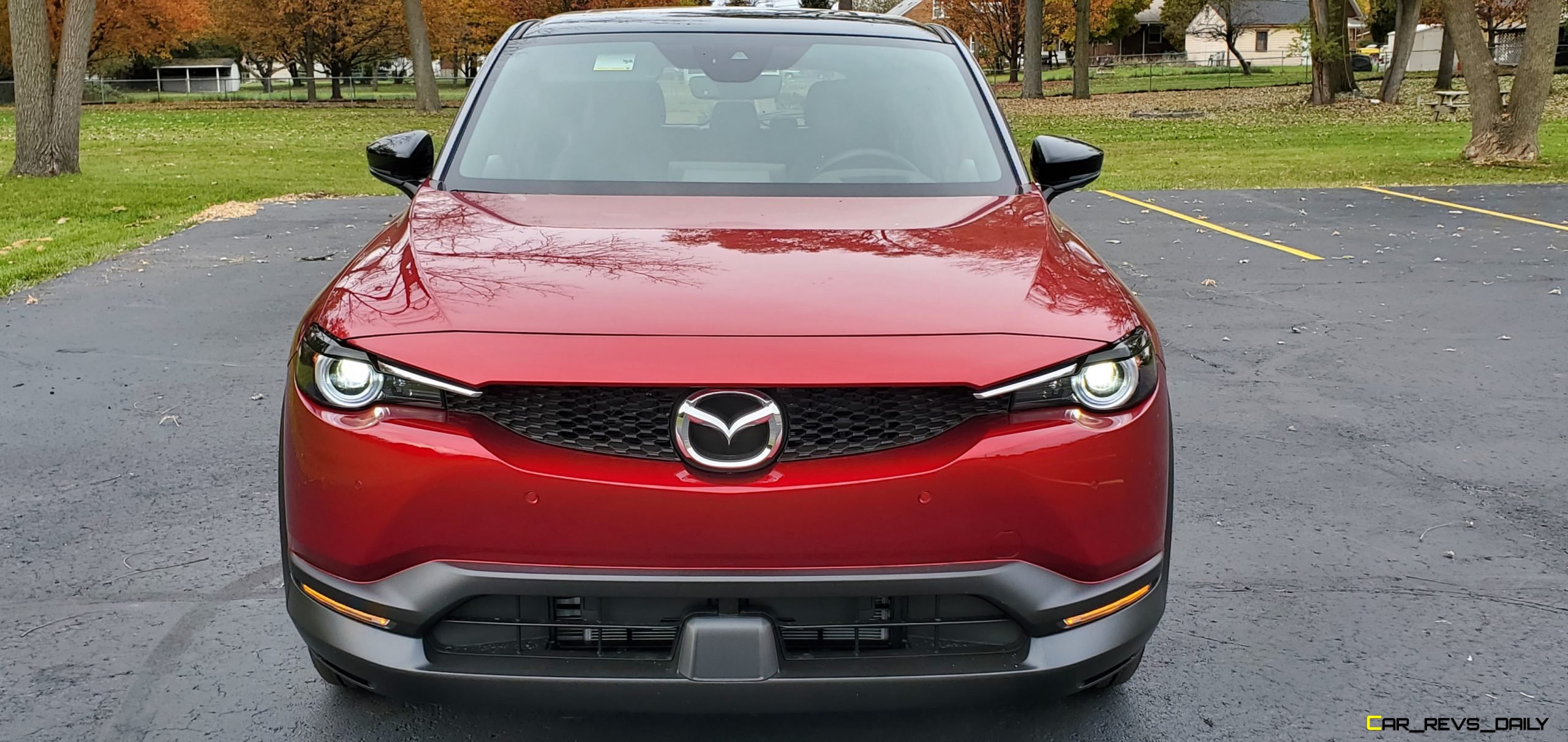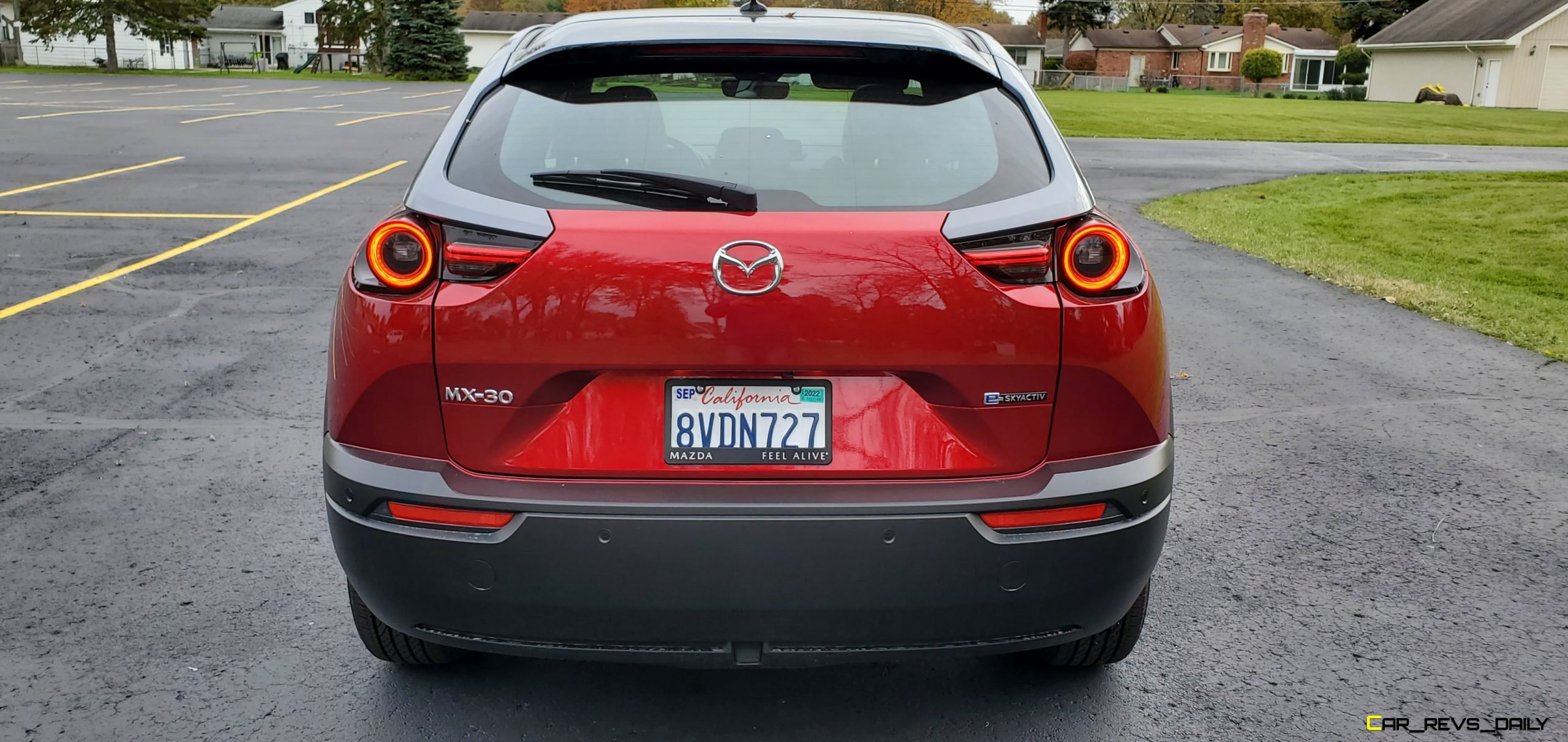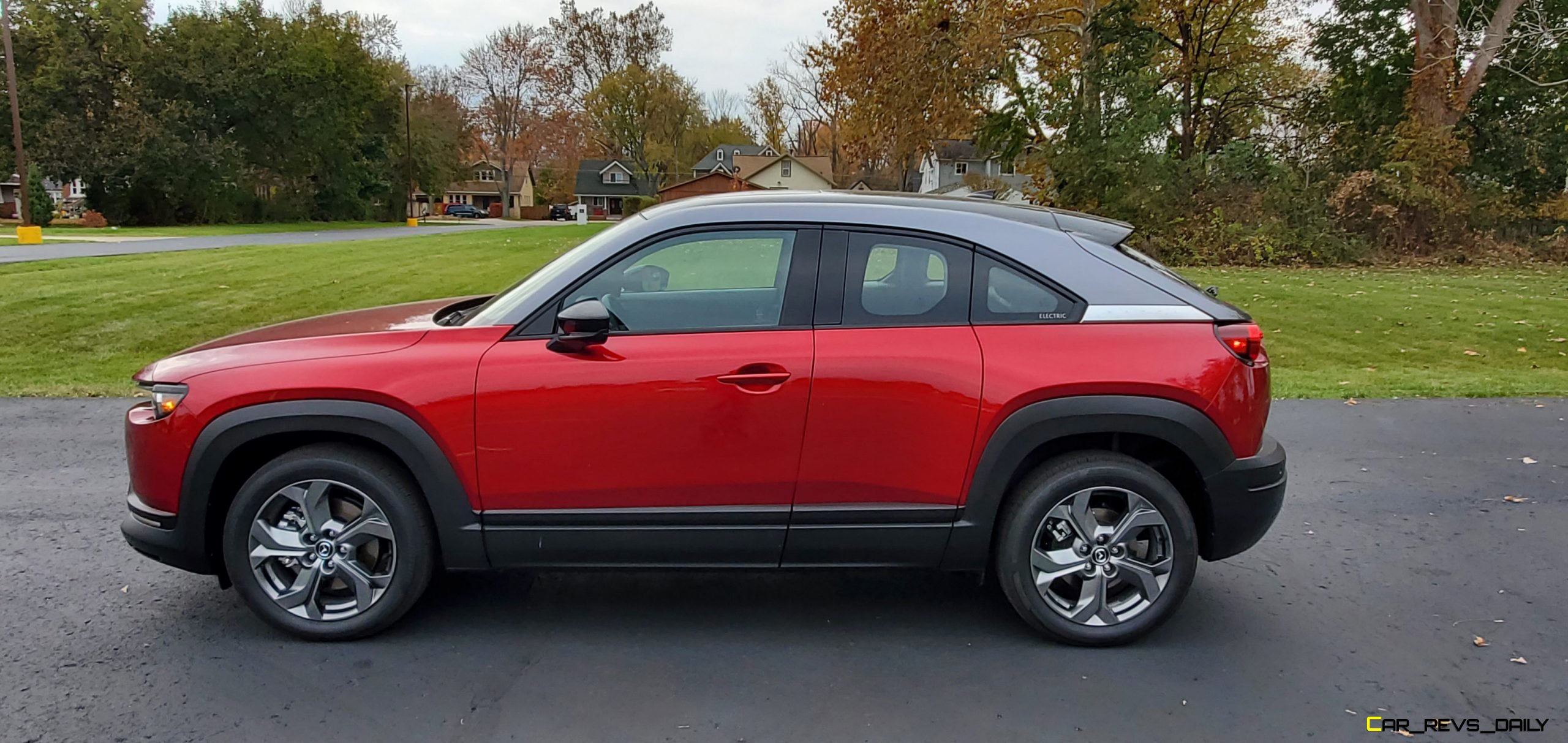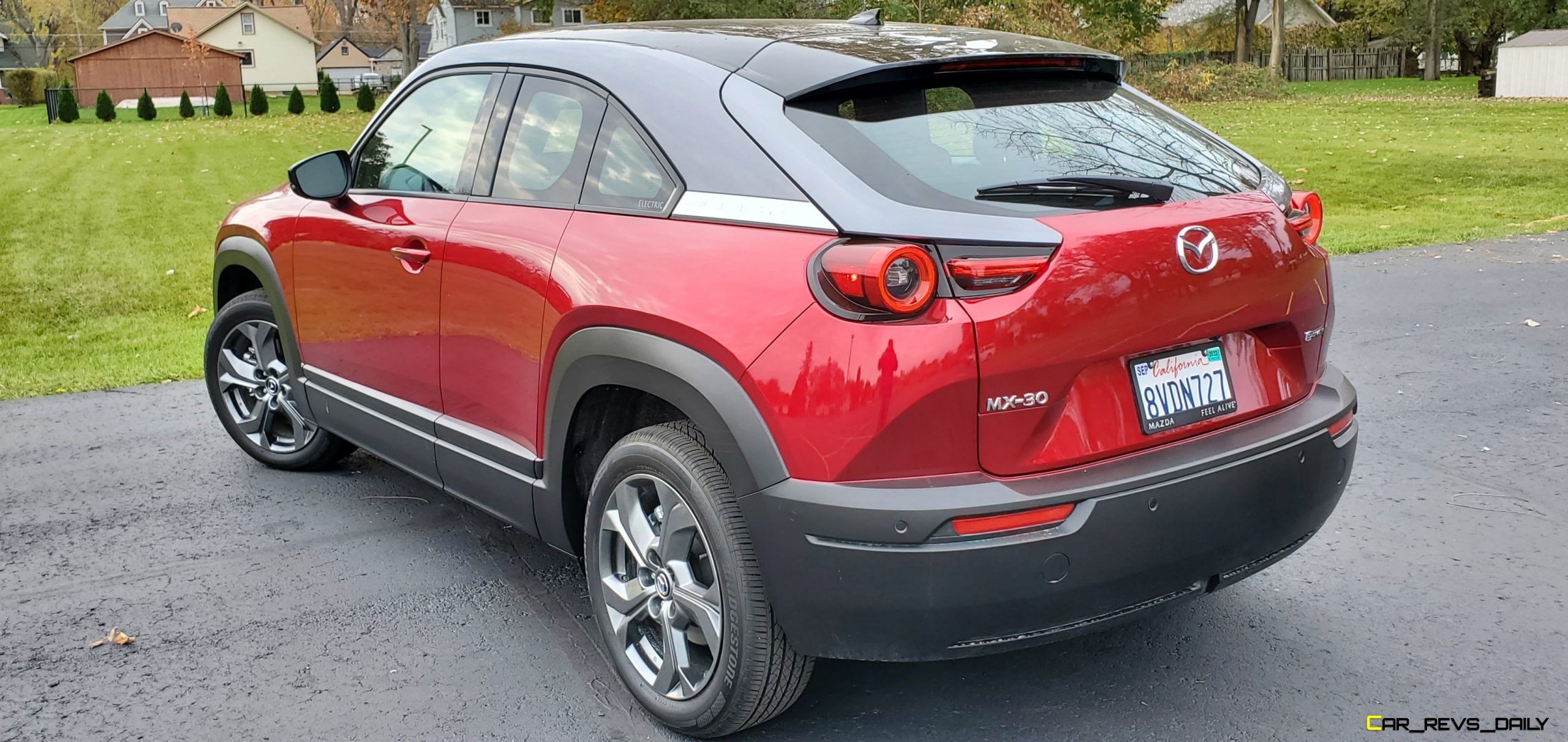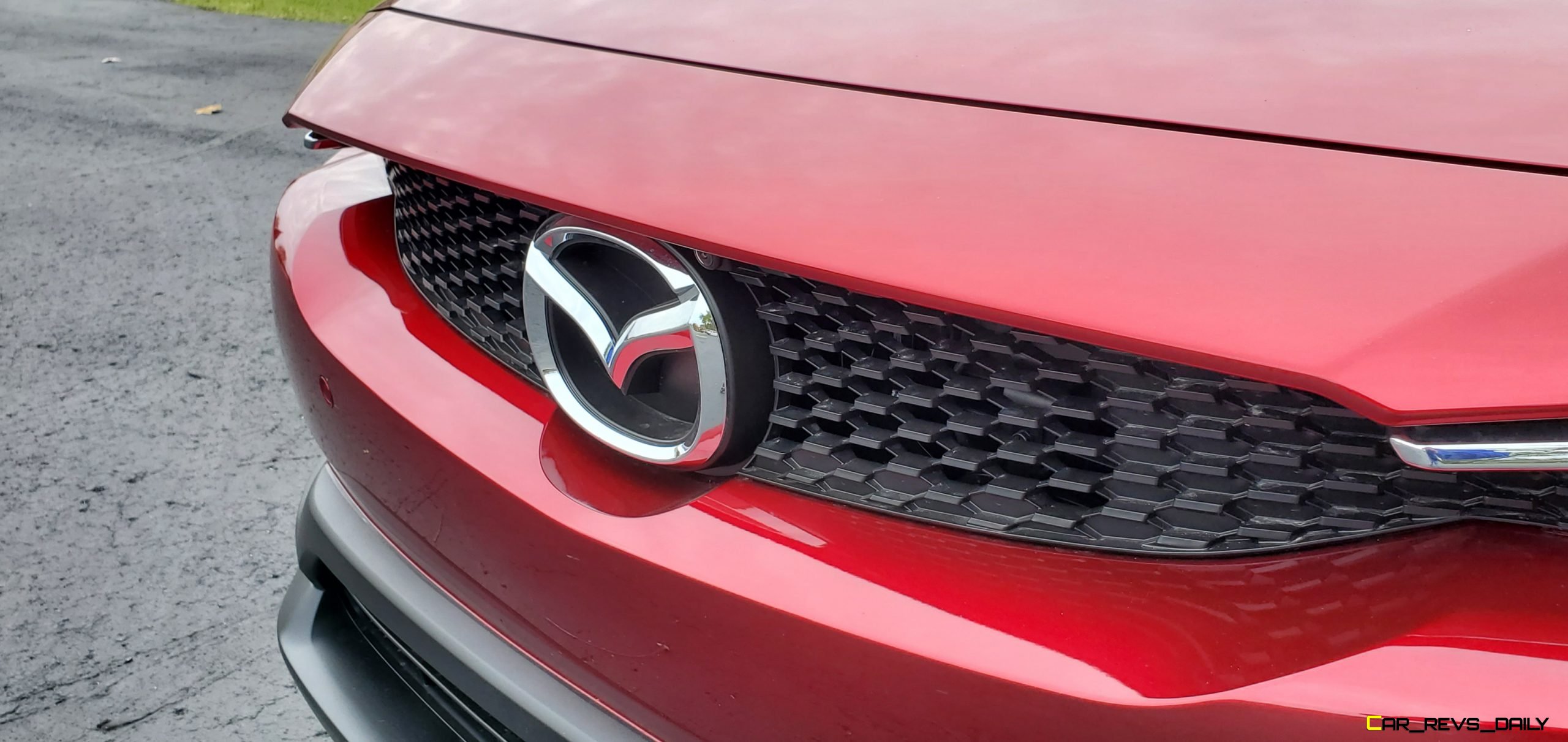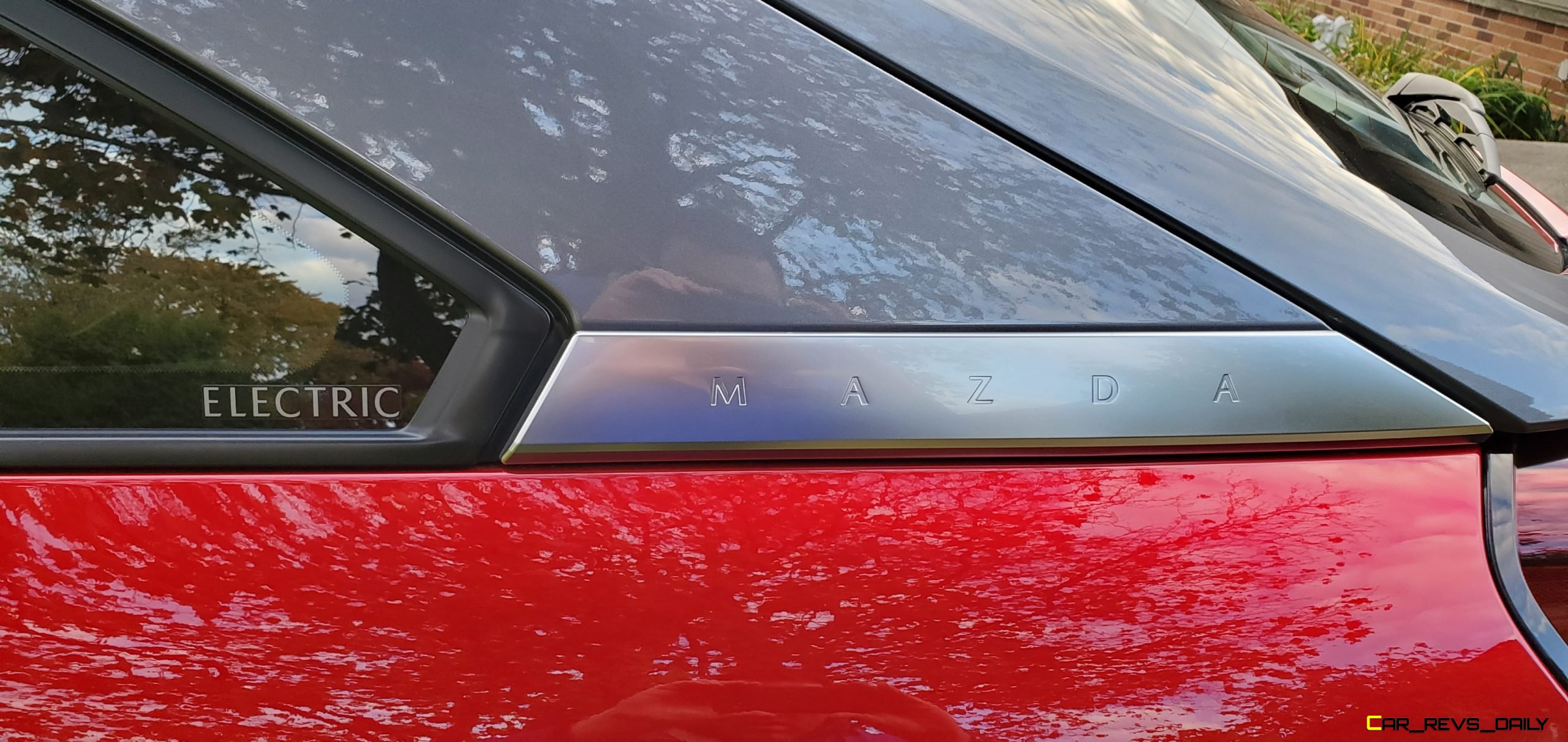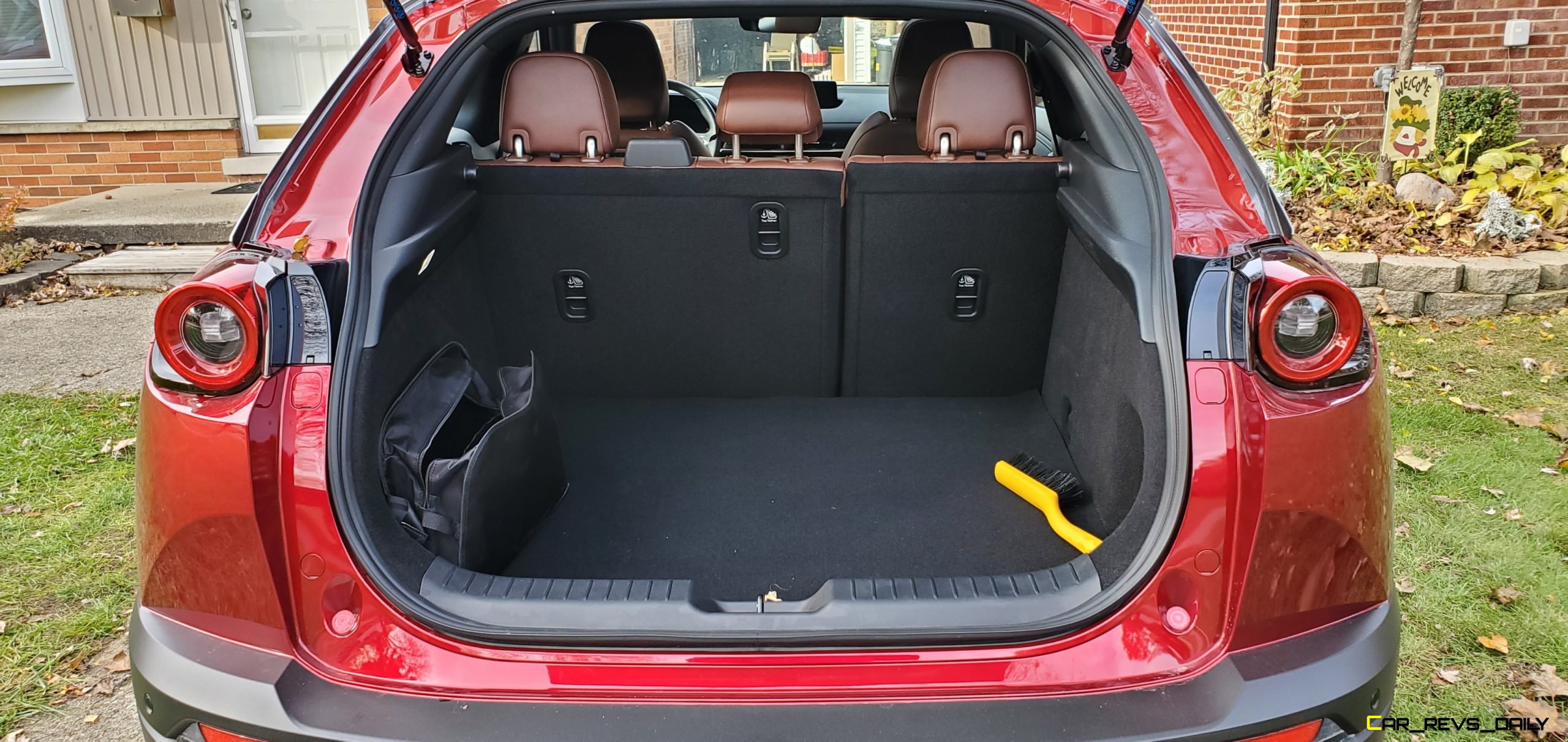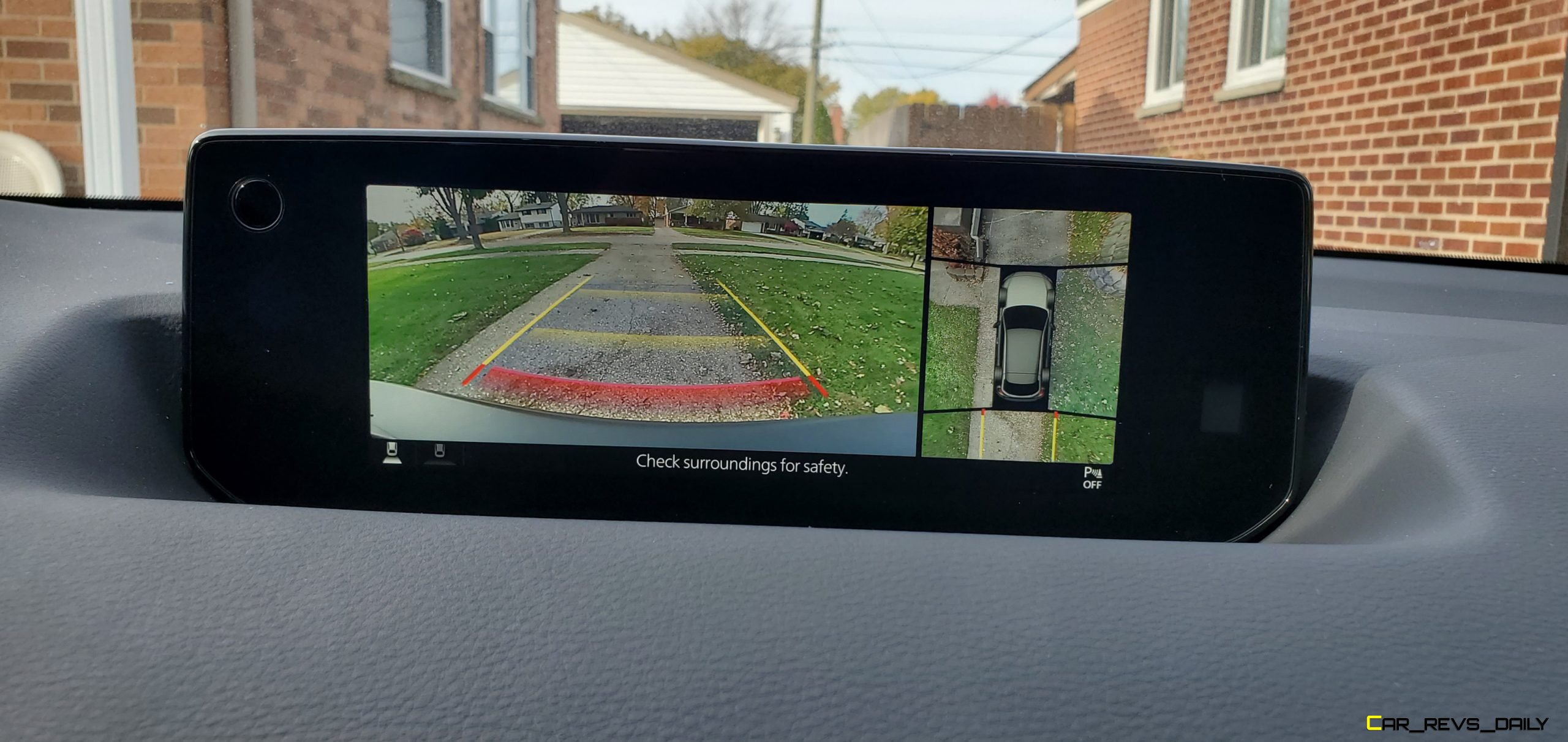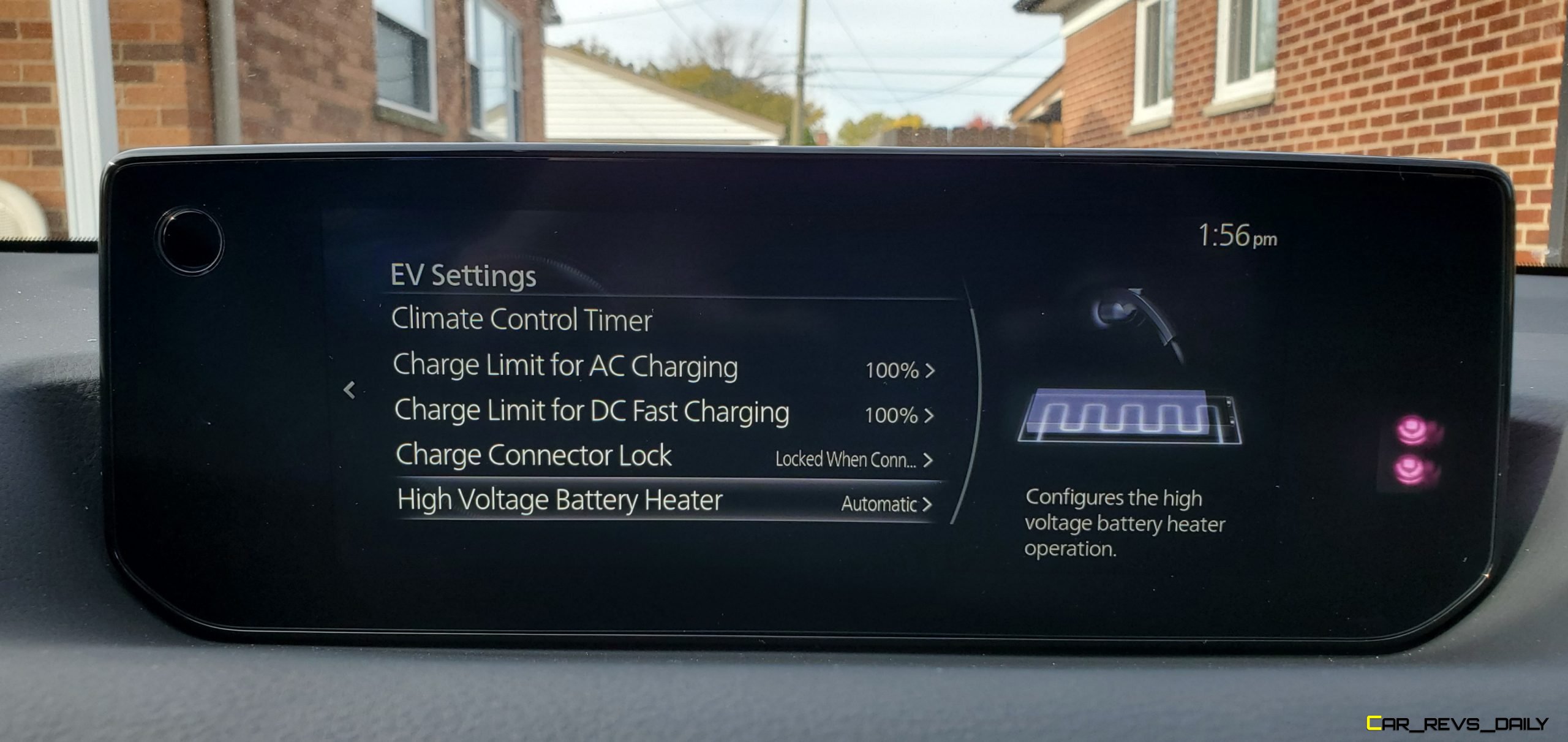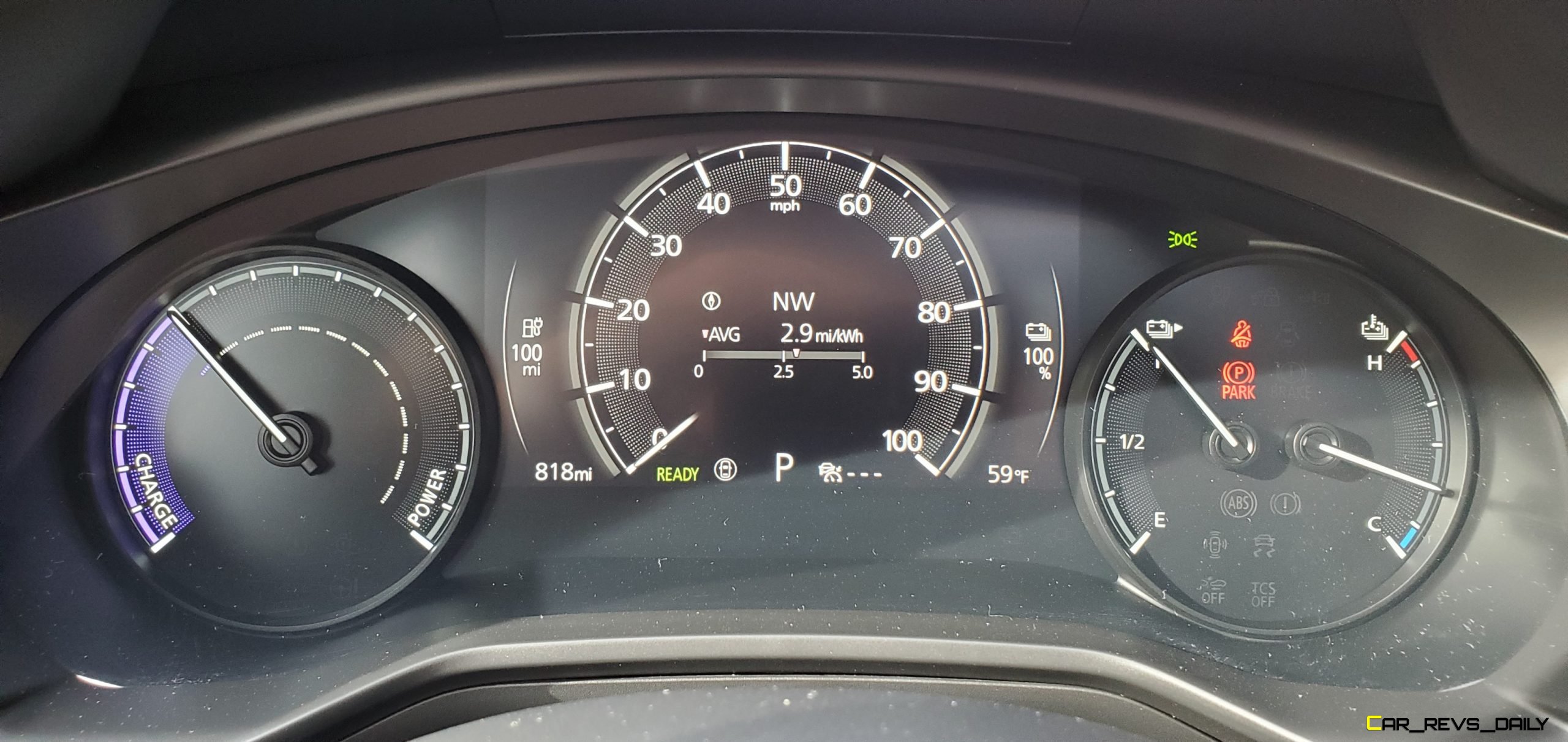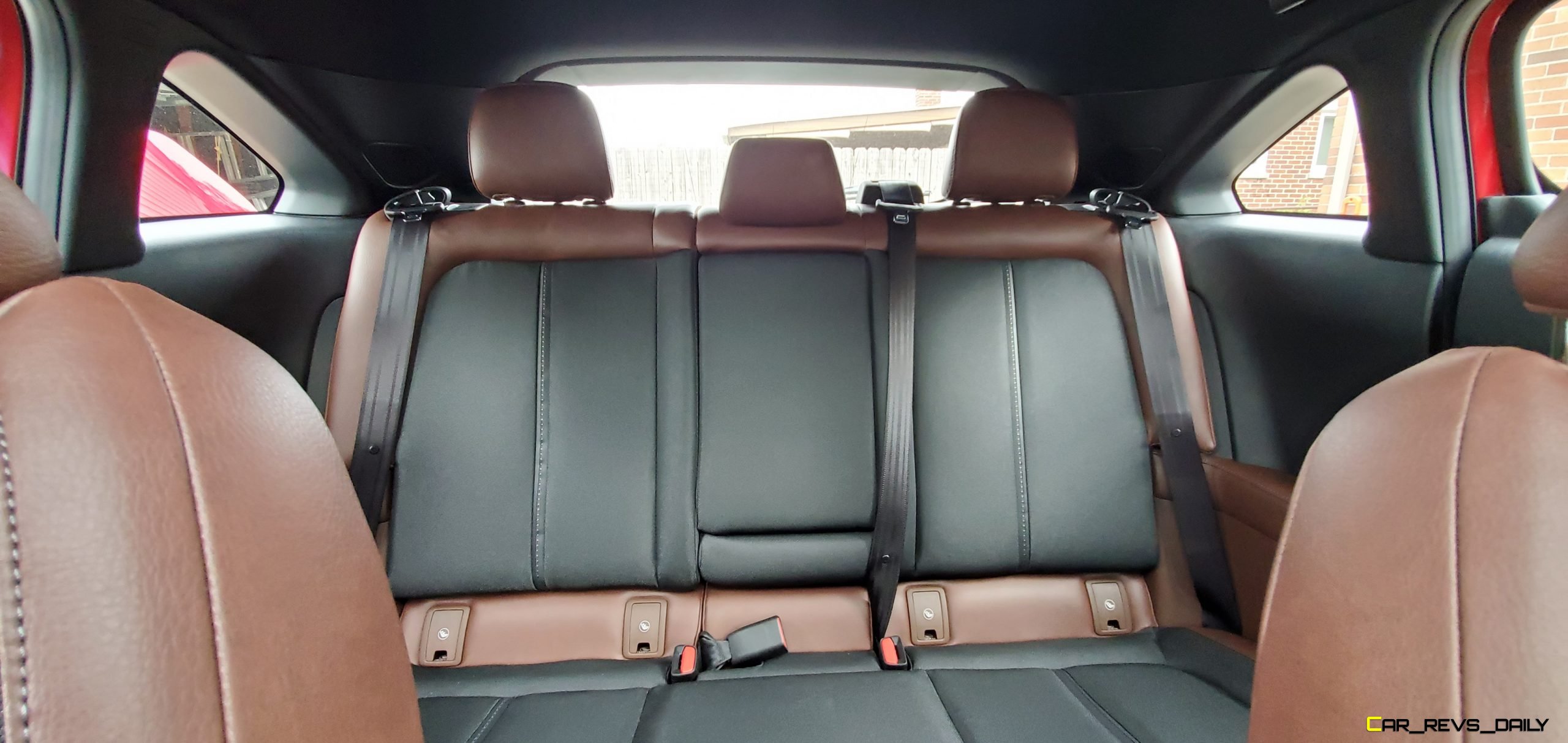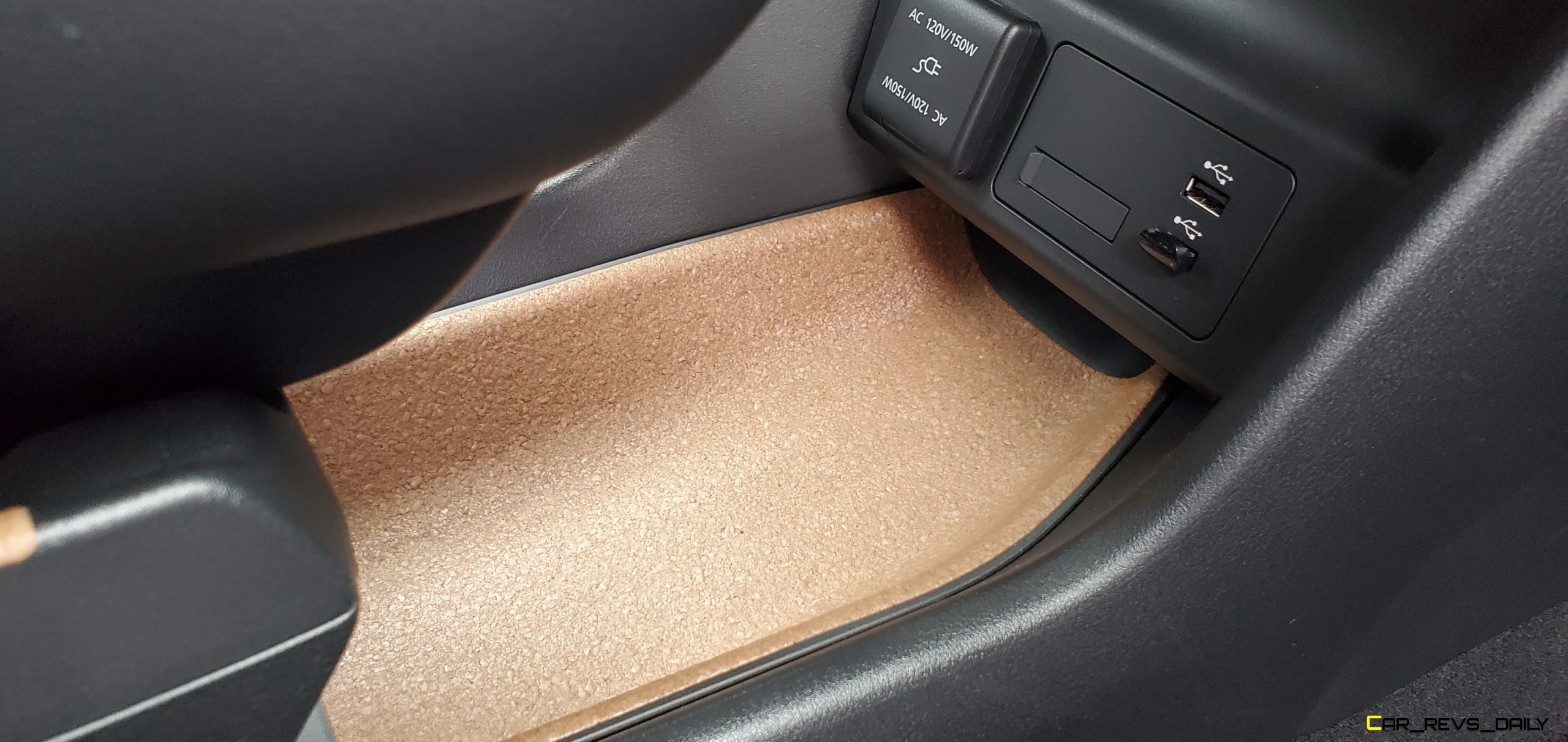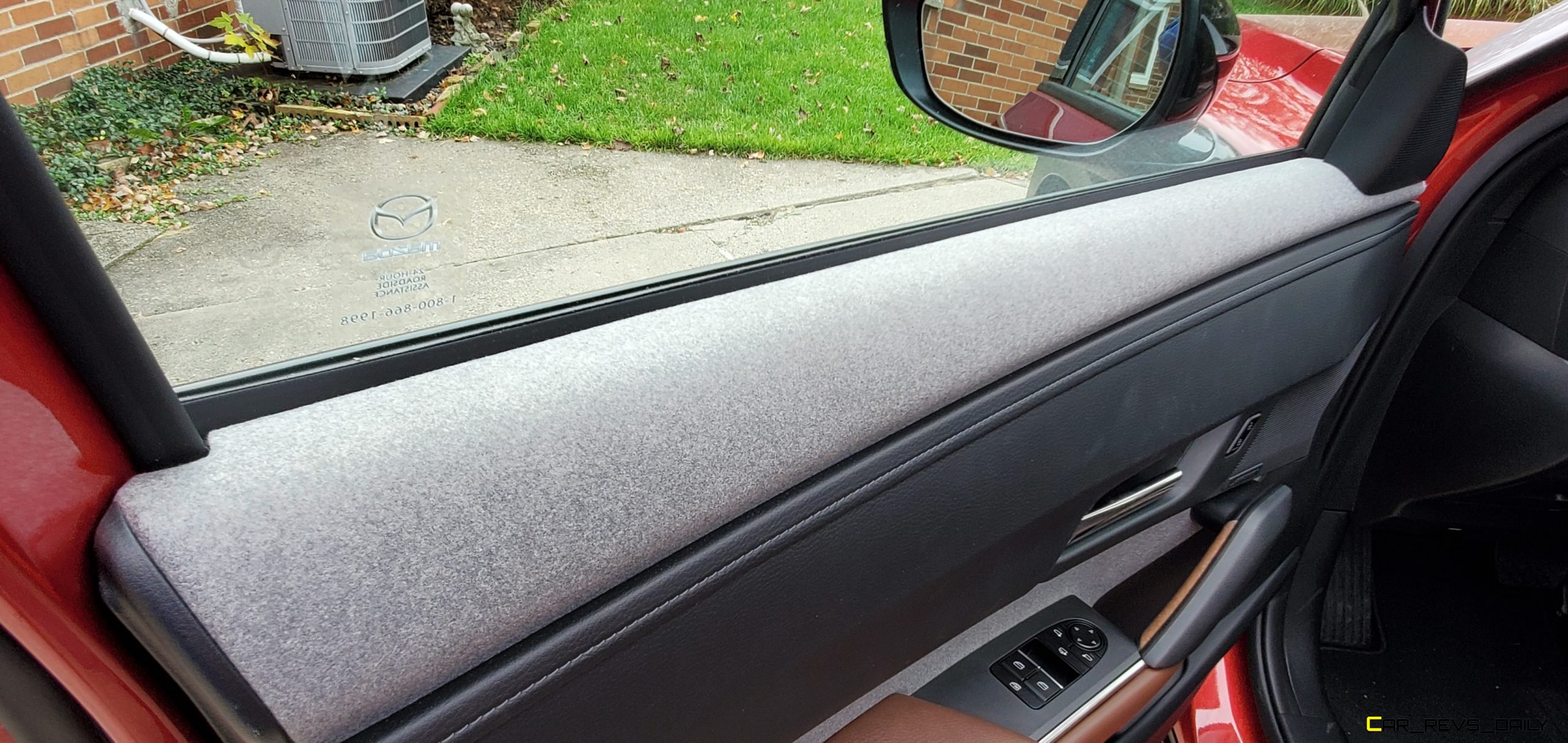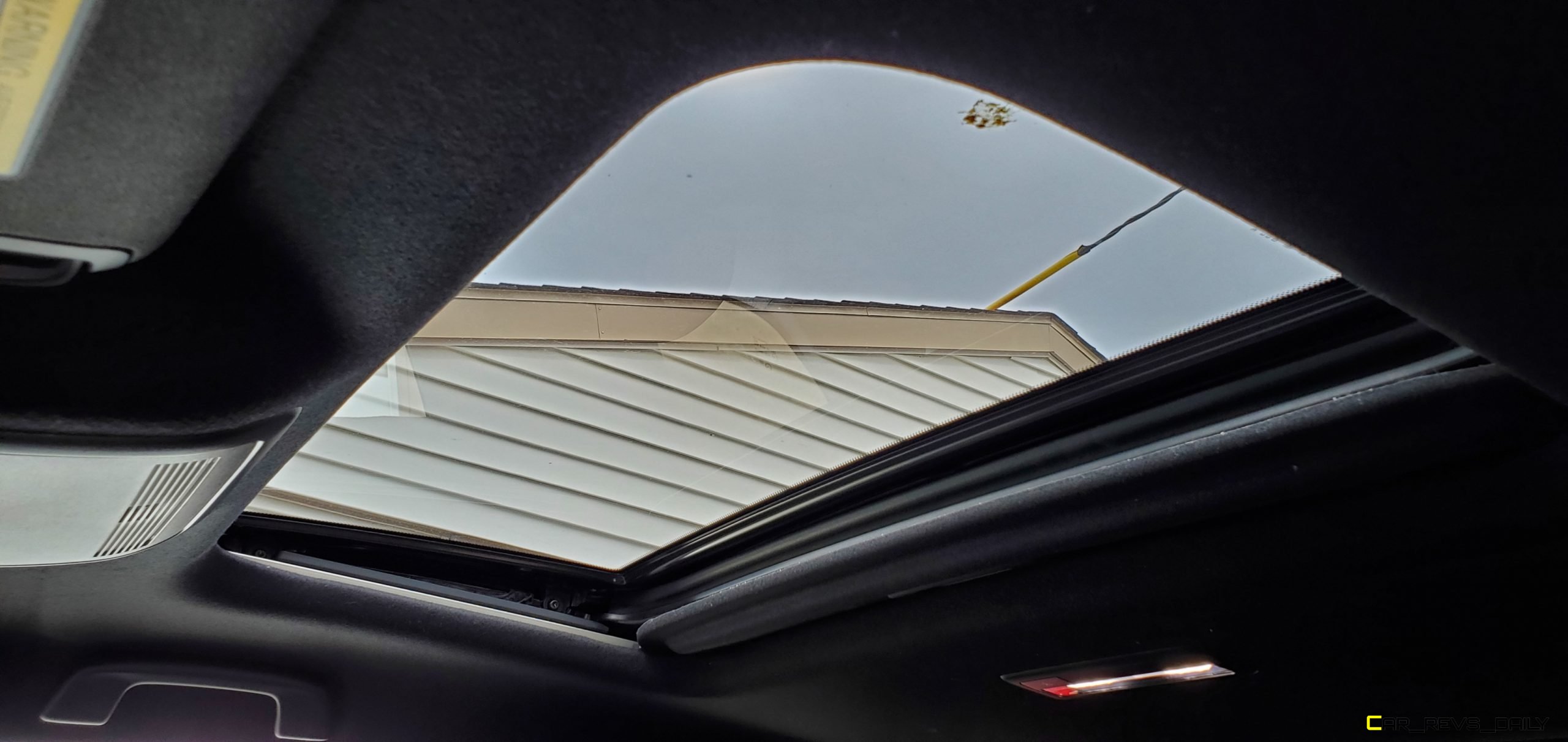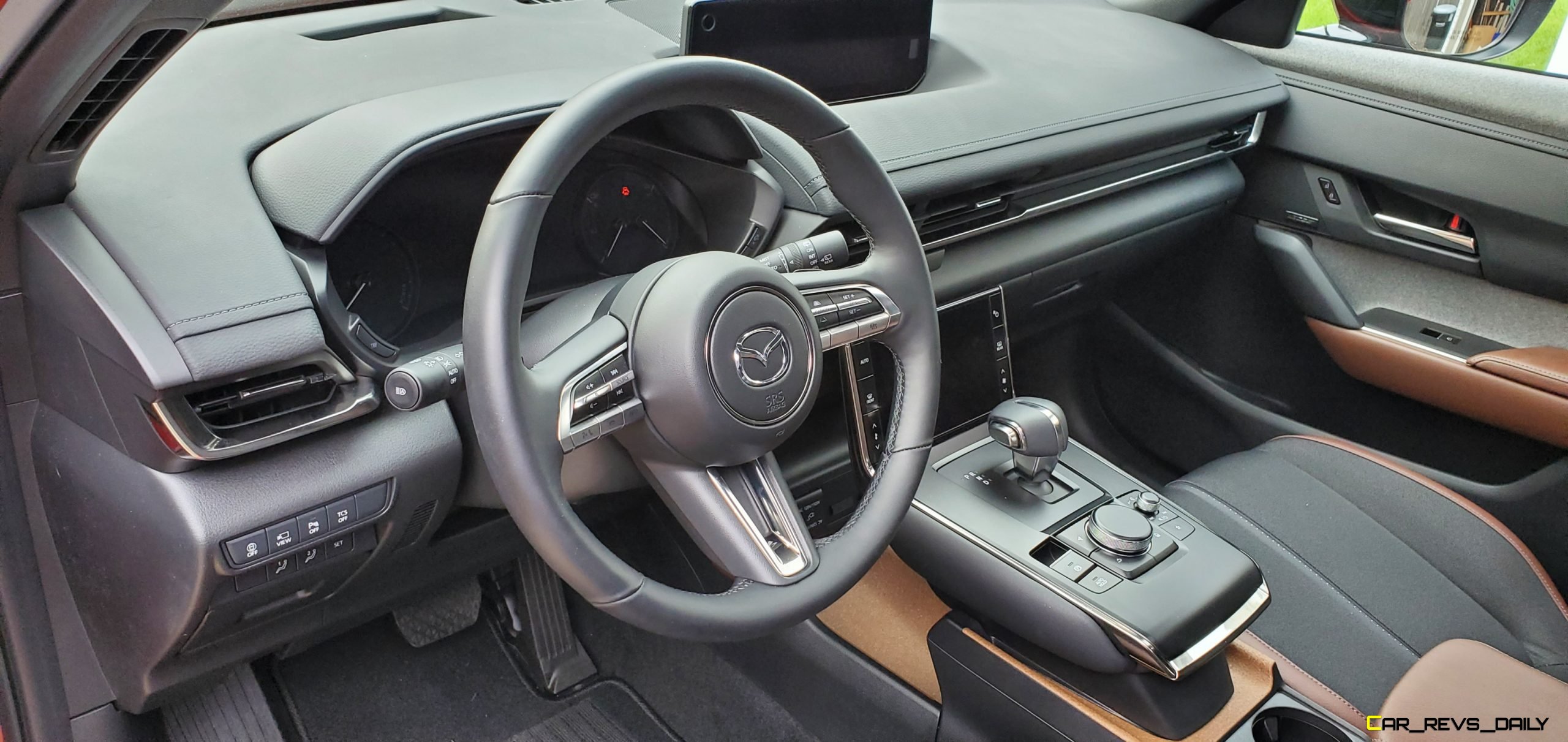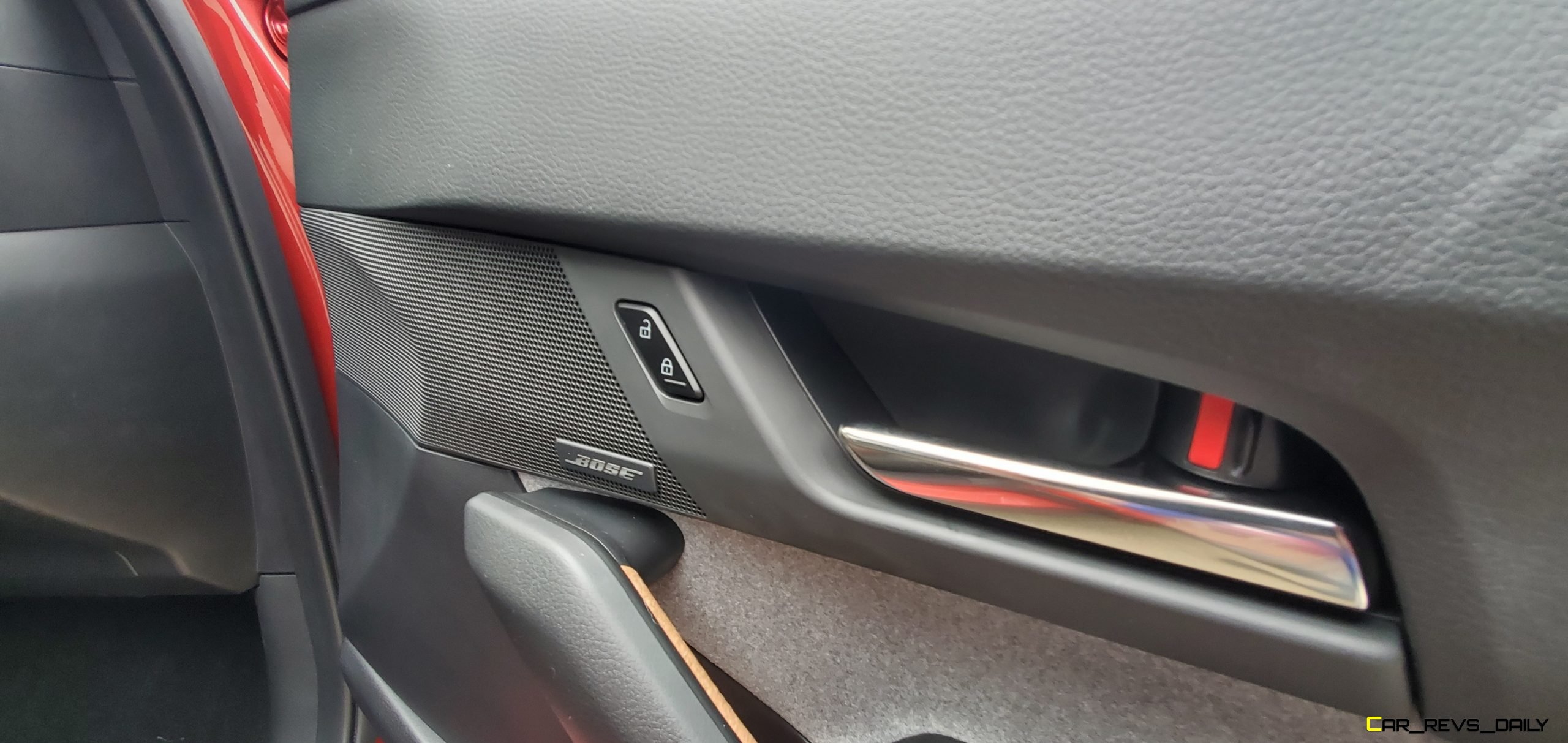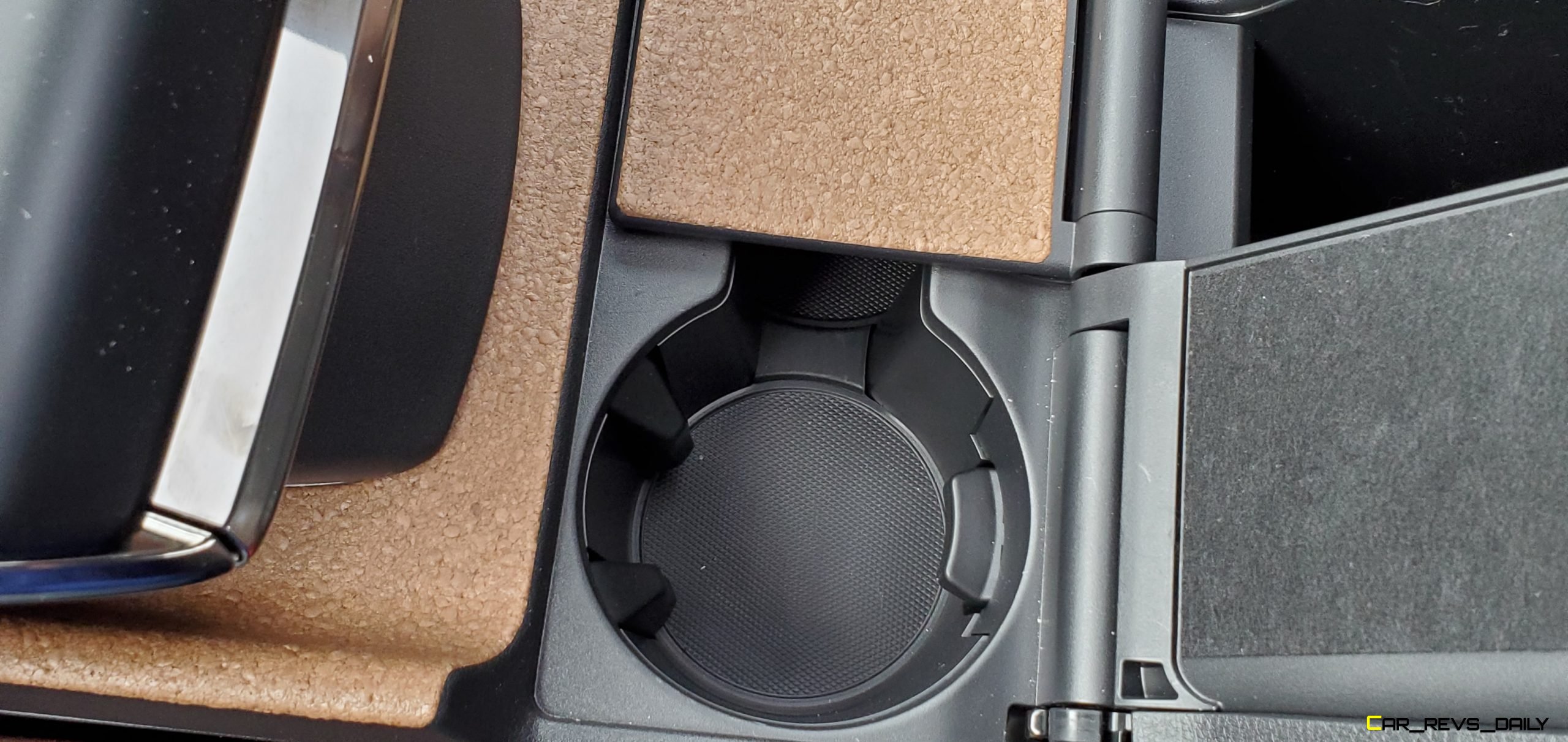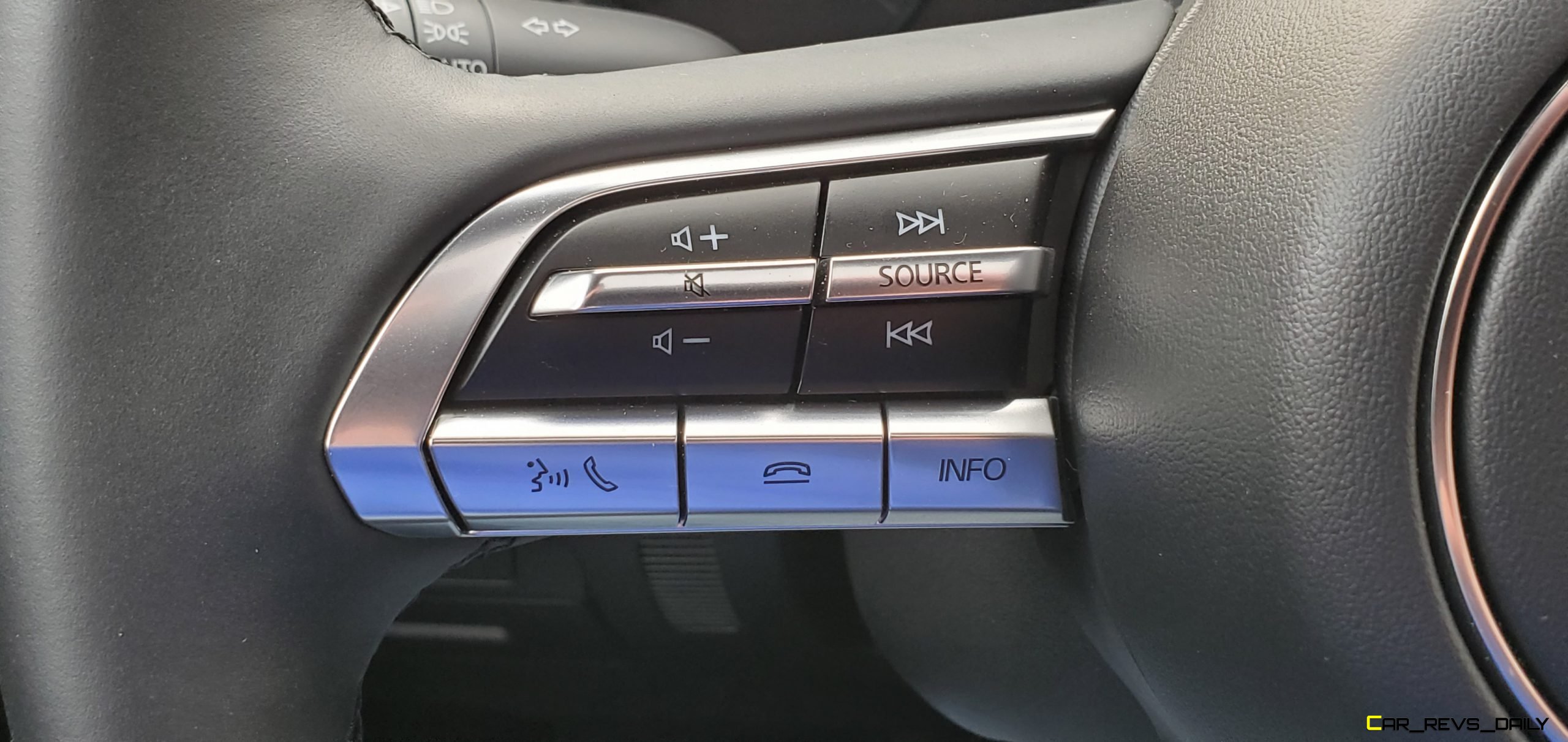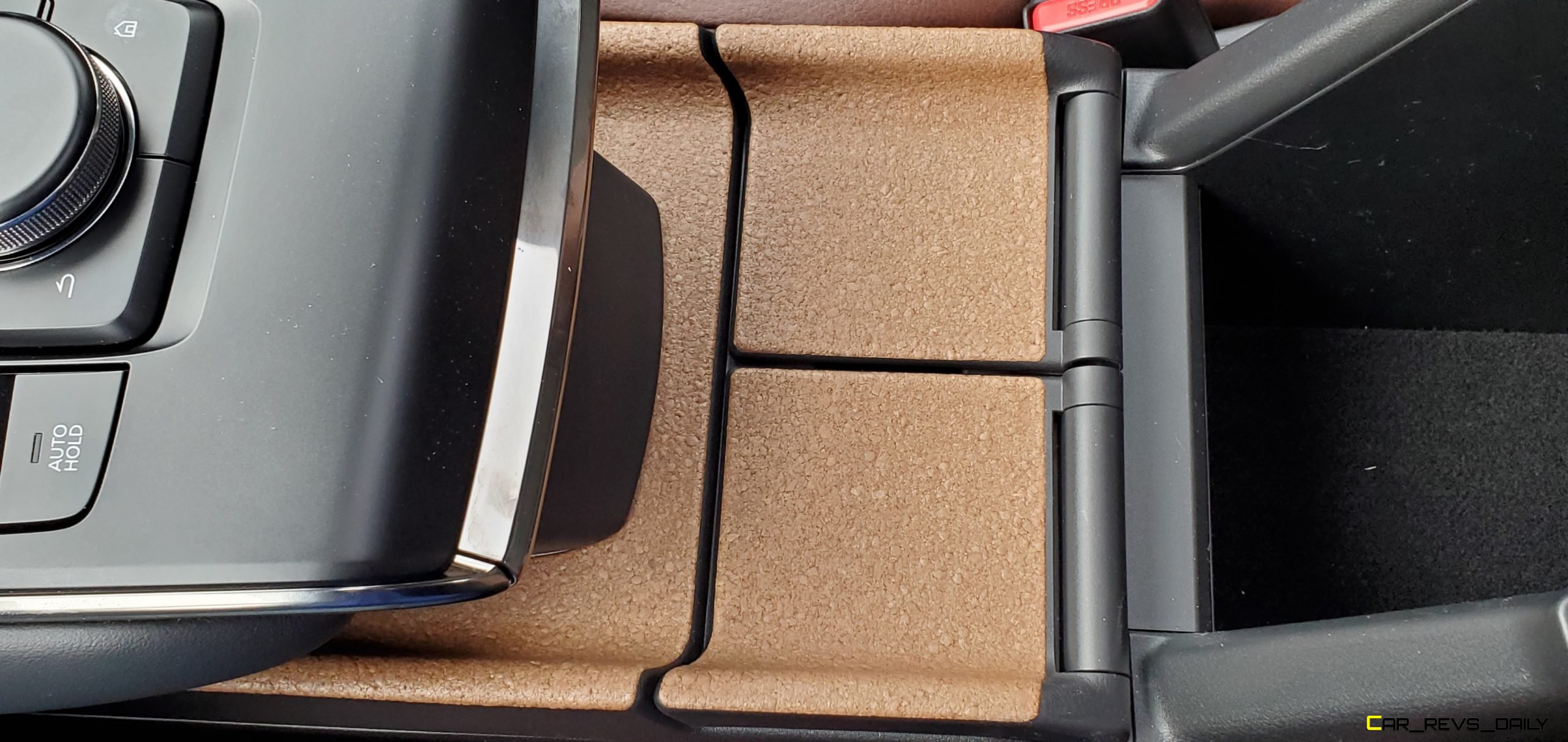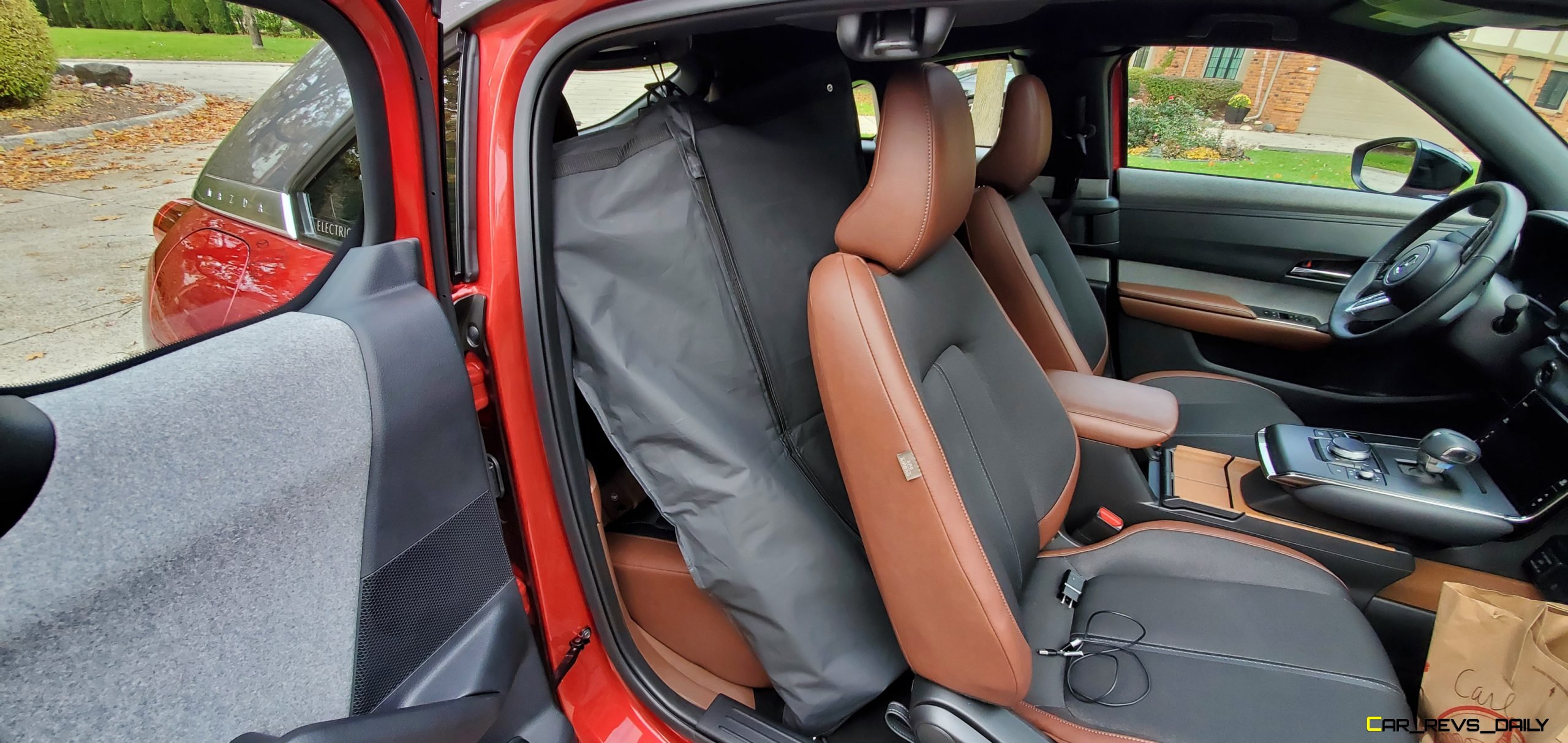When Mazda crafted the MX-30 EV CUV, they wanted to achieve three key things with it. They wanted it to be a potent spearhead for their EV projects, a stylish family commuter, and a testbed to learn from. We recently had a chance to spend time with the MX-30, and while it does have some potential in a few categories, Mazda missed the mark in one essential category, range.
Eye Catching Suit Of Clothes Draws Plenty Of Attention
Before we get into some of the other things that make the MX-30 stand out from rivals, we might as well focus on its bold exterior styling. The look here is simple and clean but without losing out on some of the curb appeal that has made recent Mazda entries stand out in the eyes of consumers. The front fascia has a small faux grille piece accented with aggressive-looking headlights. The MX-30 is roughly the size of a CX-30, but the dimensions of the MX-30 help it look smaller than it is. That’s especially true with the rear and its stylish-looking taillights. The space back there also features a small panel that proudly advertises the all-electric character of the MX-30.
The small size allowed our tester to successfully navigate tight parking spots during its visit, which happened to occur during the week of my wedding. The pre-wedding festivities took place in downtown Rochester, allowing the MX-30 to show its chops dealing with the parking garages and some of the narrow streets that dotted the area. Our only complaint centered around the oddly shaped door for the charging port. It’s wider than the actual port itself, and it seemed that some of the space could’ve been used for other things.
Compromised MX-30 Interior Blends Luxury With Questionable Practicality
Slip inside the interior of the MX-30, and you will immediately notice all of the sustainable materials that are abundant in the cabin. The front seats are made of fabric upholstery sourced from recycled soda bottles, while real corkwood is used in other interior spots. The latter is also a subtle glimpse into Mazda’s past with the company actually making bottle corks at one point in the past before it ditched the drink industry for the automotive world.
The comfortable front seats can easily fit two average-sized adults, but things take a turn when you slip into the cramped rear seats. Legroom is quite lacking, and the sloping roofline eats into headroom for taller occupants. This also plays into cargo space, with the MX-30’s accommodations being less than ideal with the seats up. Folding the seats down does help improve things slightly, but this sparse amount of space forced us to pack carefully and kept the MX-30 from hauling bulkier items needed for the wedding. The MX-30 also brings back the iconic suicide doors that were a signature trait of the RX-8 sports car. The doors help add some style to the CUV, but they also sacrifice practicality, with rear passengers actually having to wait until the driver or front passenger lets them out.
Move back to the front seats, and the MX-30 follows the trend set by other CUVs, with the floating center console freeing up space for storage behind a small screen that focuses on climate controls. The MX-30 also comes with a host of standard equipment, including heated seats, a 7.0-inch digital instrument cluster, a power sunroof, and other welcome goodies. We also like the 8.8-inch infotainment system, which looks crisp and comes with standard Apple CarPlay and Android Auto.
However, there are also a few omissions amid all of this equipment due to the electrified hardware, with the seats having complete manual adjustments and front-wheel drive versus the traditional all-wheel-drive system. That’ll make the MX-30 stick out against a few of its rivals which either have all-wheel drive or power-operated seats.
Mazda MX-30 Is An Excercise In Range Management
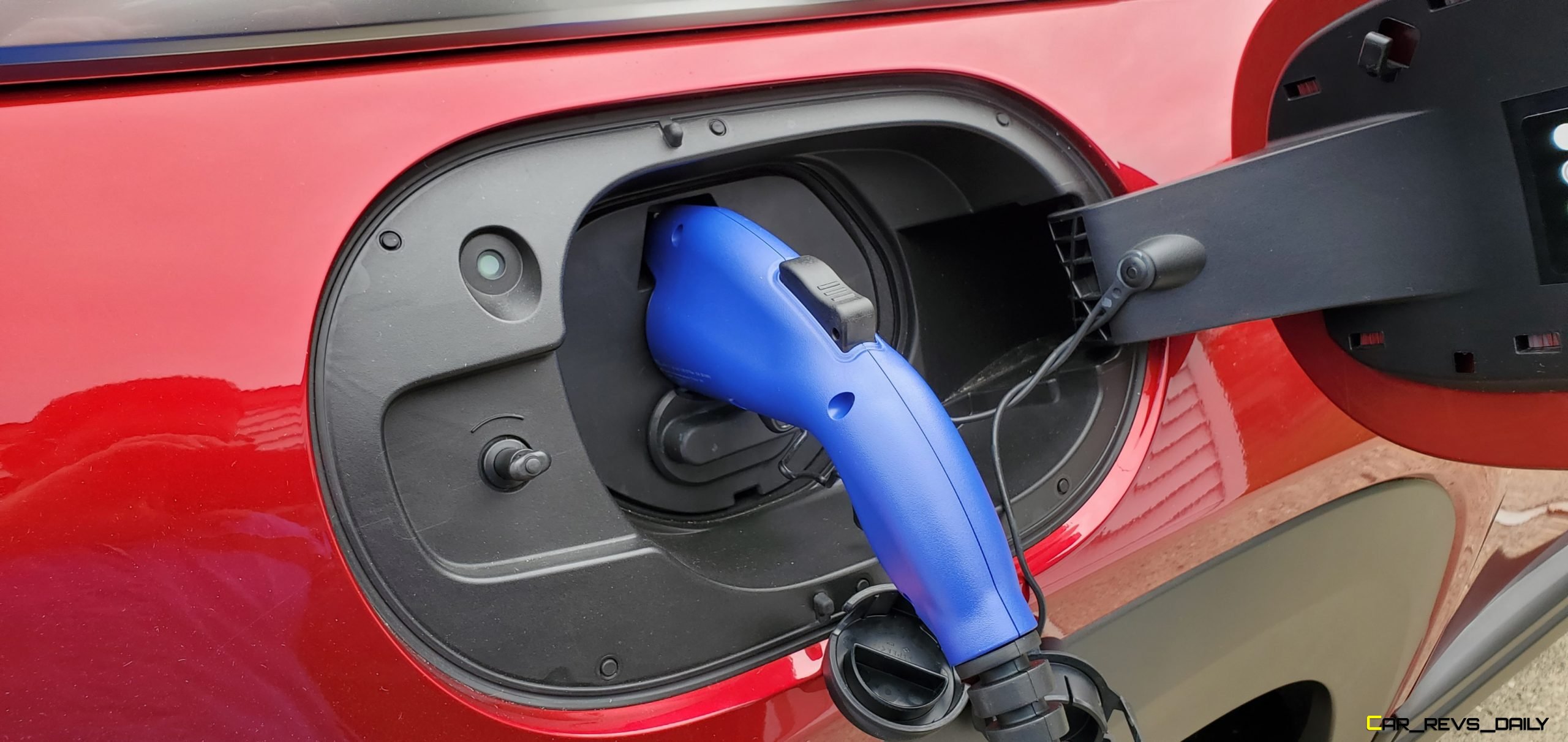
The 2022 Mazda MX-30 is currently only for sale in California and a big reason why that’s the case emerges when you look at its range. With rivals like the Hyundai Kona EV and Chevrolet Bolt EV offering over 200 miles of all-electric range, the Mazda only offers a mere 100 miles of range. Mazda reps we spoke to claim that part of this discrepancy is offset by a vehicle loaner program which will allow owners in California to swap the MX-30 for a gasoline-powered model for long road trips, with the owner switching back to the MX-30 when they get back into town.
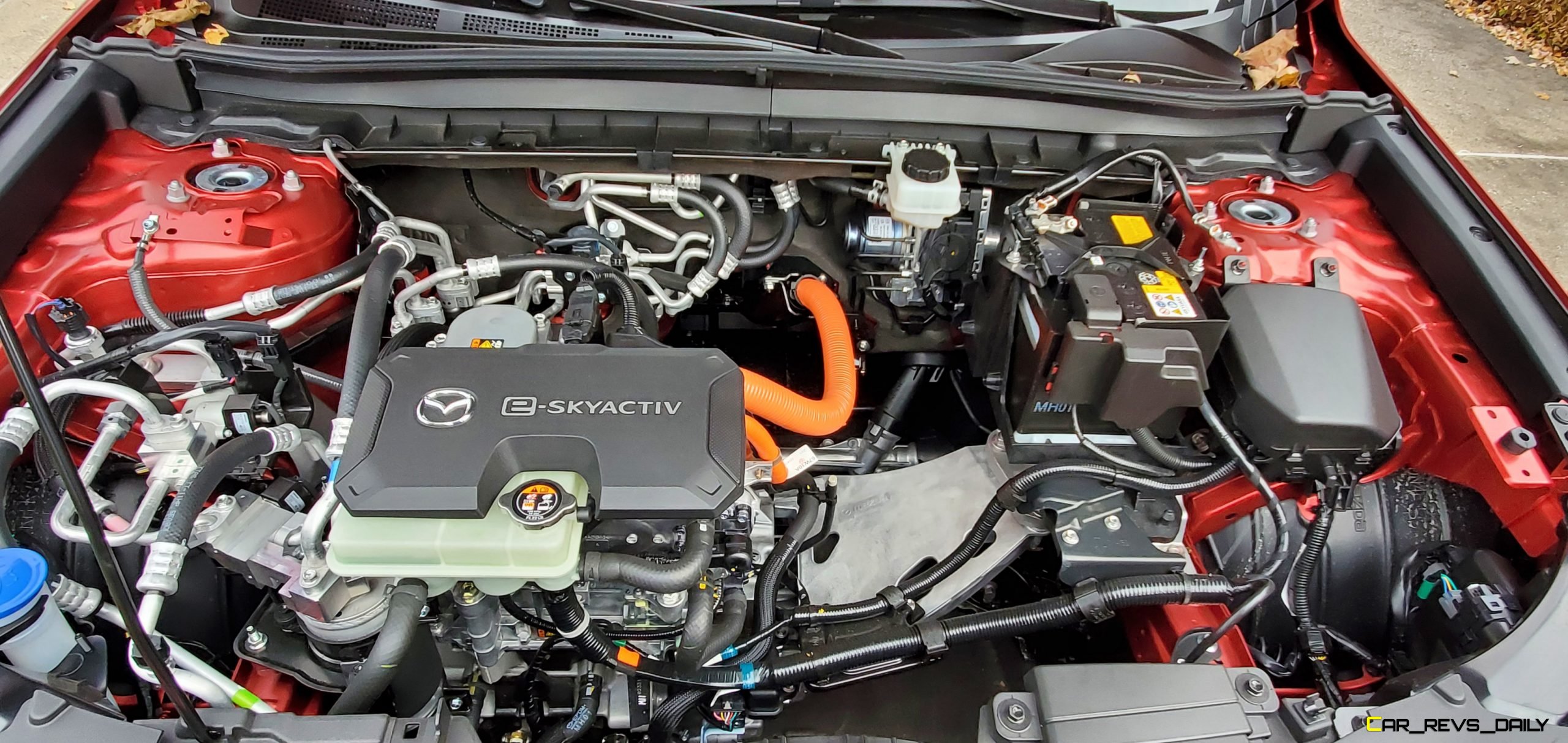
Back in Michigan, the lack of range forced us to carefully plan our errands to ensure we had enough range to make it home and recharge. The MX-30 also became the first EV that visited to formally reject the advances of our usual charging outlet for night charging, with the CUV defiantly showing a mere 25 miles of range when we went to check on it the next morning. Subsequent research revealed that this behavior is a common software glitch with the model, and after moving it to a new location on our back patio, the MX-30 went back to properly charging for the duration of its stay with us. As for the day of the wedding, the MX-30 performed its role well and got to take a breather at the hotel after hauling some final supplies for the pre-ceremony limo festivities.
Performance is also a bit lacking too, with our tester needing 8.7 seconds to make the sprint to 60 mph. Thankfully the steering and suspension were reminiscent of a Miata, and this pairing became our highlight items when taking the MX-30 through winding backroads nearby. Rumors are that Mazda will eventually make a plug-in hybrid version of the MX-30 with a gasoline-powered rotary engine paired with the electrified hardware. Adding plug-in hybrid capability would not only significantly improve range, but it would also allow the MX-30 to bring the rotary engine back into production after being axed in the RX-8.
Value Quotient
With the 2022 Mazda MX-30 being limited to California, it doesn’t have as much consumer reach as many EV rivals. For buyers that are fortunate enough to live in the Golden State, a base MX-30 starts at $34,695, with our tester having a final sticker of just under $40,000. This pricing is right in the thick of things with other EV rivals, but the lack of range is magnified even more and when you pair it with some of the compromises that exist, the MX-30 simply doesn’t have the value appeal that exists with other EVs.
That said, it’s not all bad news for the MX-30. It’s still a stylish and relatively luxurious EV and that might be appealing to buyers that spend the bulk of their day in the city and can stretch the range at inner-city charging stations before heading home and charging at home. However, with the rest of the EV segment already moving towards the 400 miles of range goal post, having an EV entry that only offers 100 miles of range is simply not feasible in the grand scheme of things. Here’s hoping that the range-extending rotary engine makes its appearance soon so that the MX-30 can unlock all of its hidden potential.

Carl Malek has been an automotive journalist for over 10 years. First starting out as a freelance photographer before making the transition to writing during college, his work has appeared on numerous automotive forums as well as websites such as Autoshopper.com.
Carl is also a big fan of British vehicles with the bulk of his devotion going to the Morgan Motor Company as well as offerings from Lotus, MG, and Caterham. When he is not writing about automobiles, Carl enjoys spending time with his family and friends in the Metro Detroit area, as well as spending time with his adorable pets.

